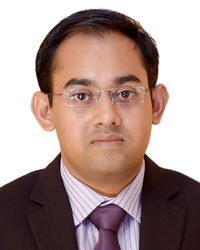 Dr.
Dr.Mohammad Rahmat Ullah
GastwissenschaftlerBodenökologie
Bis 06/2025 bei BayCEER
Forschungsinteressen:
- Verständnis der Auswirkungen von Klimastress, wie Trockenheit und Erwärmung, auf Ökosysteme
- Identifizierung der Rolle von Bodenmikroben bei der Übertragung von Kohlenstoff zwischen Totholz und Streu
- Untersuchung der Klima-Rückkopplungsmechanismen und der Kohlenstoffspeicherung in Permafrostmoorgebieten
Publikationen:
- MR Ullah, Y Carrillo, FA Dijkstra. 2023. Relative contributions of fungi and bacteria to litter decomposition under low and high soil moisture in an Australian grassland. Applied Soil Ecology, Elsevier, 182, 104737.
- MR Ullah, Y Carrillo, FA Dijkstra. 2021. Drought-induced and seasonal variation in carbon use efficiency is associated with fungi: bacteria ratio and enzyme production in a grassland ecosystem. Soil Biology and Biochemistry, Elsevier, 155: 108159.
- MR Ullah, Y Carrillo, FA Dijkstra. 2021. Biocides provide a source of carbon and nitrogen directly to surviving microbes and indirectly through a pulse in microbial necromass. Applied Soil Ecology, Elsevier, 160, 103862.
- MR Ullah, PE Corneo, FA Dijkstra. 2020. Inter-seasonal Nitrogen Loss with Drought Depends on Fertilizer Management in a Seminatural Australian Grassland. Ecosystems, Springer, 23: 1281–1293.
- F Yan, T Guan, MR Ullah, L Gao, YX Fan. 2023. A precise forest spatial structure investigation using the SLAM+AR technology. Frontiers in Ecology and Evolution, Frontiers, 11:491.
- F Yan, MR Ullah, Y Gong, Z Feng, Y Chowdury, L Wu. 2012. Use of a no prism total station for field measurements in Pinus tabulaeformis Carr. stands in China. Biosystems Engineering, Elsevier,113: 259–265.
Weitere Publikationen sind verfügbar auf ORCiD: https://orcid.org/0000-0002-8383-0602

